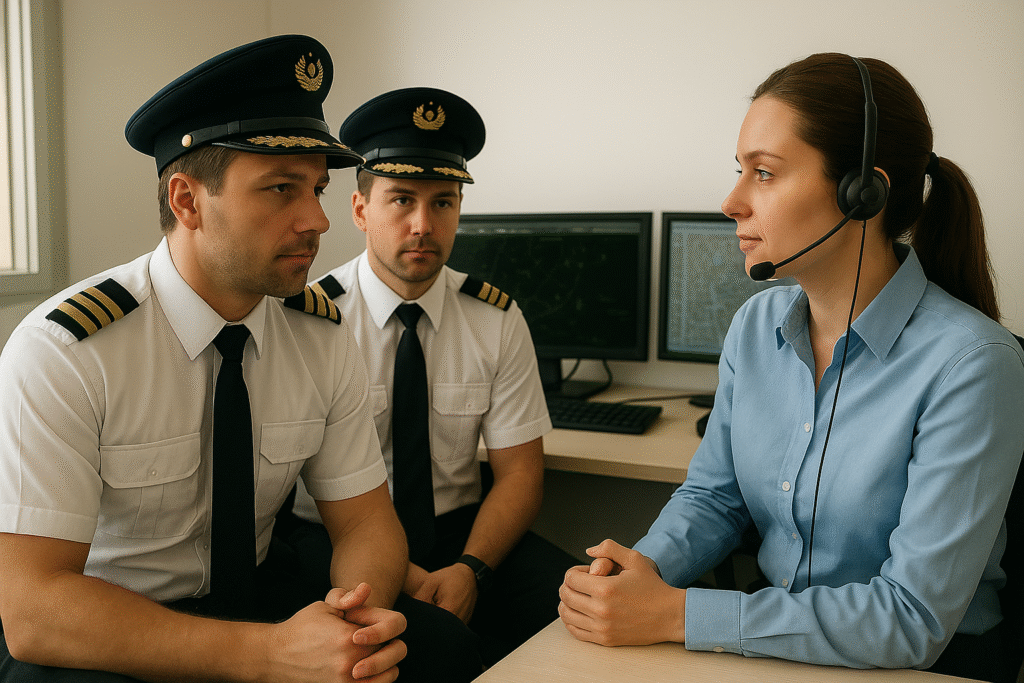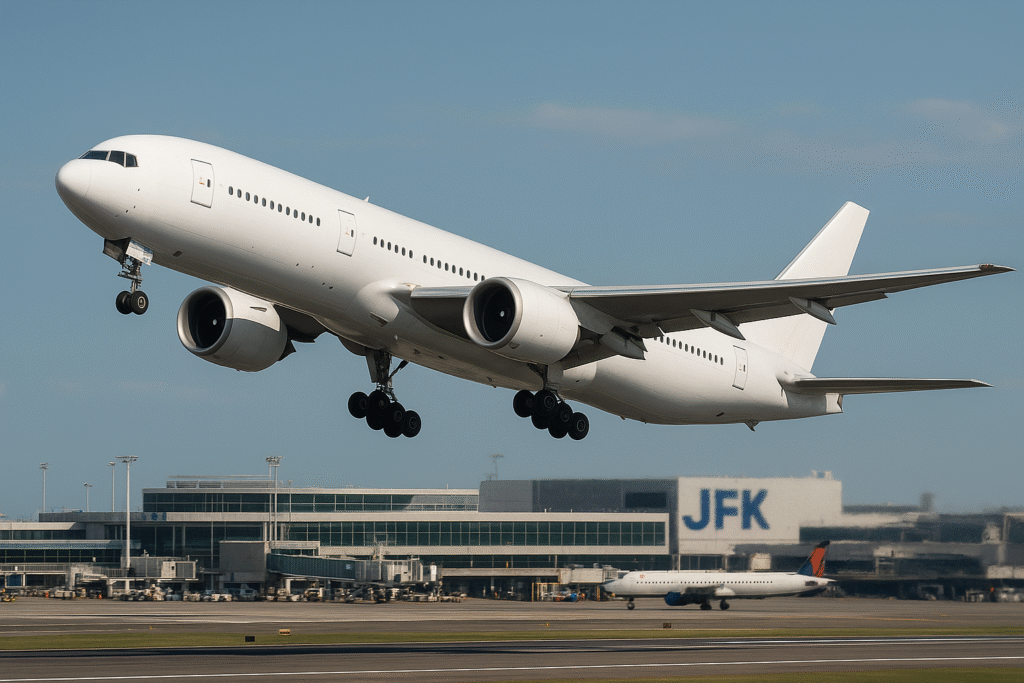Have you ever wondered what happens before an airplane takes off? It’s not just about boarding passengers and taking off into the sky. Behind every flight from Point A to Point B, there’s careful planning, teamwork, and safety checks.
Whether you’re someone curious about flying or a future aviation pro, this guide breaks it all down in simple words. Let’s go on a journey through the steps that prepare a plane for flight — from first briefing to safe landing.
What Does “Preparing a Flight” Mean?
Preparing a flight means getting everything ready so the airplane can safely and smoothly fly from one place to another. It includes checking the weather, planning the route, loading the right amount of fuel, and making sure the plane is safe to fly.
Think of it like planning a road trip — but in the sky, and a lot more detailed!
Why Is Flight Preparation So Important?
Flying may seem easy once you’re in the air. But behind the scenes, it’s all about safety, efficiency, and being ready for anything. Flight preparation helps make sure:
-
The route is safe and legal
-
The plane has enough fuel (plus extra)
-
The weather is clear or manageable
-
Everyone knows what to do if something unexpected happens
Airlines and pilots follow strict steps because small mistakes can cause big problems. That’s why flight prep is taken very seriously.
Step-by-Step: How a Flight Is Prepared
Let’s walk through the actual steps taken before every flight.
Aeronautical Info & Notices (AIS Briefing)
Before any pilot flies, they need the latest info about:
-
Airport conditions (Are any runways closed?)
-
Navigation warnings (Are there military exercises or hazards nearby?)
-
Temporary rules or changes (Called NOTAMs, or Notices to Airmen)
This step helps pilots avoid danger zones and plan the best way to fly.
Weather Forecast & Alerts (Meteorological Briefing)
Weather is a big deal in aviation. Pilots and dispatchers check:
-
Wind direction and speed
-
Rain, storms, or snow
-
Cloud levels and visibility
-
Turbulence or icing risks
This helps the team choose the safest altitude and best time to fly. If a storm is ahead, the flight might go around it or wait it out.
Choosing the Route & Charts
Now it’s time to plan the route from departure to destination. Pilots and flight planners use:
-
Navigation charts
-
Airways (sky-high “roads” for planes)
-
Waypoints (like signposts in the sky)
They make sure the path avoids busy areas or danger zones and follows air traffic control (ATC) rules.
Fuel, Weight & Balance Planning
An airplane can’t just “fill up the tank” without thinking. The team needs to:
-
Know the exact fuel needed for the trip
-
Add extra fuel (called contingency fuel) in case of delays or diversions
-
Check the weight of passengers, cargo, and baggage
-
Balance the load properly (so the plane flies smoothly)
This keeps the flight both safe and fuel-efficient.
Filing the Flight Plan with ATC
Once everything is set — the route, weather, and fuel — the pilot or dispatcher files the flight plan with air traffic control (ATC). This plan includes:
-
The flight number
-
The route and altitudes
-
The estimated time of departure and arrival
-
The type of aircraft
ATC uses this to manage the sky safely, avoiding mid-air traffic and keeping flights spaced properly.
Pre-Departure Checks & Final Briefing
Now it’s time for the final checks. This includes:
-
Walkaround inspection of the aircraft (done by pilots and engineers)
-
Confirming paperwork like load sheets and weather updates
-
Passenger boarding and cargo loading
-
Crew briefing about the flight plan and any possible issues
Once everything is good to go, the flight gets clearance to start engines, taxi, and take off.

What Happens During the Flight?
Once in the air, the flight is far from “on autopilot.” Here’s what happens.
Following the Plan
Pilots follow the route and altitude from the flight plan. But they stay in constant contact with air traffic control for updates, changes, or new instructions.
Adjusting for Weather, Traffic, or Emergencies
Things don’t always go 100% to plan. Sometimes:
-
Storms pop up along the way
-
Busy skies mean delays or rerouting
-
A passenger might get sick
Pilots stay ready to change plans, talk to ATC, and keep everyone safe. That’s why the extra planning at the start matters so much.
After the Flight: What Happens Next?
Once the plane lands safely at Point B, the journey still isn’t over. Here’s what happens:
-
Pilots report any issues during the flight
-
Engineers inspect the aircraft
-
Refueling and cleaning happens for the next flight
-
The crew files any needed documents
Every flight adds to the logbook — helping future flights stay safe, too.

Conclusion: Simple Steps = Safe Skies
From the outside, a flight might look simple — get on, take off, land. But now you know there’s so much more going on behind the scenes.
Every flight is a team effort involving:
-
Pilots
-
Dispatchers
-
Engineers
-
Air traffic control
-
Weather experts
-
Ground crews
They all work together to plan the safest, smartest, and smoothest journey possible.
So next time you’re on a plane flying from Point A to Point B, you’ll know just how much planning went into getting you there safely!
https://shorturl.fm/Lc8sR
https://shorturl.fm/doFU5
https://shorturl.fm/2fJyH
https://shorturl.fm/LL6vV
u5eu93
https://shorturl.fm/QBH3C
https://shorturl.fm/c6Nr7
https://shorturl.fm/wyqjU
https://shorturl.fm/AExD9
https://shorturl.fm/s8DrZ
ivopqpwhqsmxkjzsyfvutjpyxnoixk
https://shorturl.fm/MgMMs
https://shorturl.fm/wyt1D
https://shorturl.fm/o2dJL
https://shorturl.fm/Ru2sX
Istanbul food tour Informative, fun, and very organized. http://www.tecnoac.com/?p=14884
https://shorturl.fm/vA474